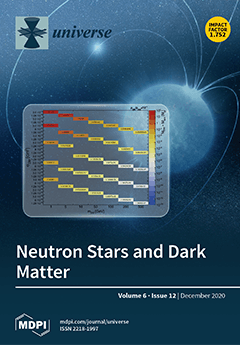Quaternions have an (over a century-old) extensive and quite complicated interaction with special relativity. Since quaternions are intrinsically 4-dimensional, and do such a good job of handling 3-dimensional rotations, the hope has always been that the use of quaternions would simplify some of
[...] Read more.
Quaternions have an (over a century-old) extensive and quite complicated interaction with special relativity. Since quaternions are intrinsically 4-dimensional, and do such a good job of handling 3-dimensional rotations, the hope has always been that the use of quaternions would simplify some of the algebra of the Lorentz transformations. Herein we report a new and relatively nice result for the relativistic combination of non-collinear 3-velocities. We work with the relativistic half-velocities
w defined by
, so that
, and promote them to quaternions using
, where
is a unit quaternion. We shall first show that the composition of relativistic half-velocities is given by
, and then show that this is also equivalent to
. Here as usual we adopt units where the speed of light is set to unity. Note that all of the complicated angular dependence for relativistic combination of non-collinear 3-velocities is now encoded in the quaternion multiplication of
with
. This result can furthermore be extended to obtain novel elegant and compact formulae for both the associated Wigner angle
and the direction of the combined velocities:
, and
. Finally, we use this formalism to investigate the conditions under which the relativistic composition of 3-velocities is associative. Thus, we would argue, many key results that are ultimately due to the non-commutativity of non-collinear boosts can be easily rephrased in terms of the non-commutative algebra of quaternions.
Full article





